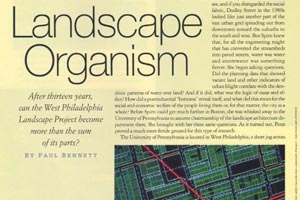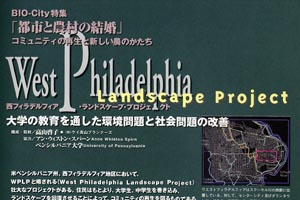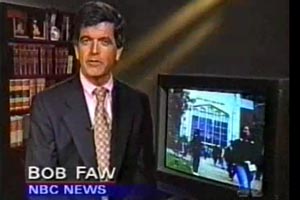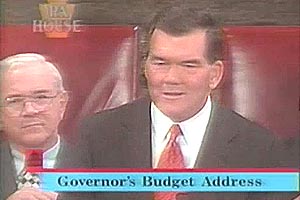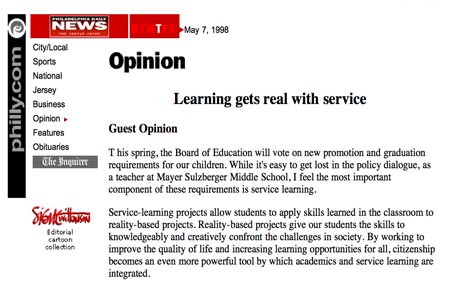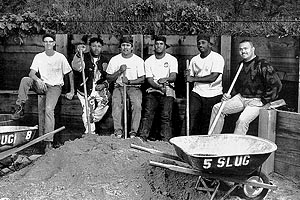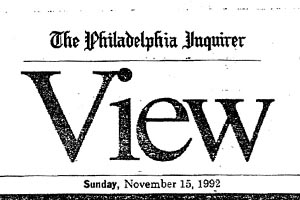Our Mission
Since 1987, we have worked with neighborhoods in the Mill Creek watershed. Our mission is to restore nature and rebuild community through strategic design, planning, and education. Through our experience in Mill Creek, we seek to demonstrate
how to create human settlements that are healthier, economical to build and maintain, more resilient, more beautiful, and more just.
A key proposal of the West Philadelphia Landscape Project is to manage the Mill Creek watershed as part of a broad approach to improving regional water quality and as a strategy to secure funds to rebuild neighborhoods. We employ landscape literacy as
a cornerstone of community development.
Phase One: The West Philadelphia Landscape Plan and Greening Project
From 1987-1991, WPLP staff designed and built community gardens, created a digital database, and proposed strategic reuse of vacant urban land, including green infrastructure to reduce combined sewer overflows. The West Philadelphia Landscape Plan: A
Framework for Action (1991) describes our proposals. Our project area was the southern half of West Philadelphia.
Phase Two: The Mill Creek Neighborhood and Watershed
From 1994-2002, WPLP focused on the Mill Creek neighborhood. We created a middle school curriculum on local history and the urban watershed, designed and built an outdoor classroom, made proposals for green infrastructure on vacant land, and worked with
neighborhood leaders to assess problems associated with the buried floodplain of the former creek. We developed a large website to host proposals and community resources and taught HTML and GIS to middle-school students. From 1996-2001,
hundreds of children learned to read their neighborhood’s landscape: they traced its past, deciphered its stories and told their stories about its future. The Mill Creek Project ended in 2002 when key teachers resigned after the Commonwealth
of Pennsylvania took over the Philadelphia School District and assigned the school to a private management company.
Phase Three: Mill Creek Watershed and Green City, Clean Waters
WPLP continues to map the evolution of neighborhoods in the Mill Creek watershed and to explore strategies for stormwater management that foster community development. In fall 2009, the Philadelphia Water Department (PWD) announced Green City, Clean Waters,
a landmark proposal to reduce combined sewer overflows through green infrastructure along the lines of previous WPLP proposals. Since then, we have probed and explored the feasibility of PWD’s proposal.
WPLP continues its relationship with Aspen Farms Community Garden and with community leaders in the Mill Creek Watershed. In 2018, we began Holding Ground, a new initiative to protect low-income homeowners from unscrupulous lenders and speculators.
